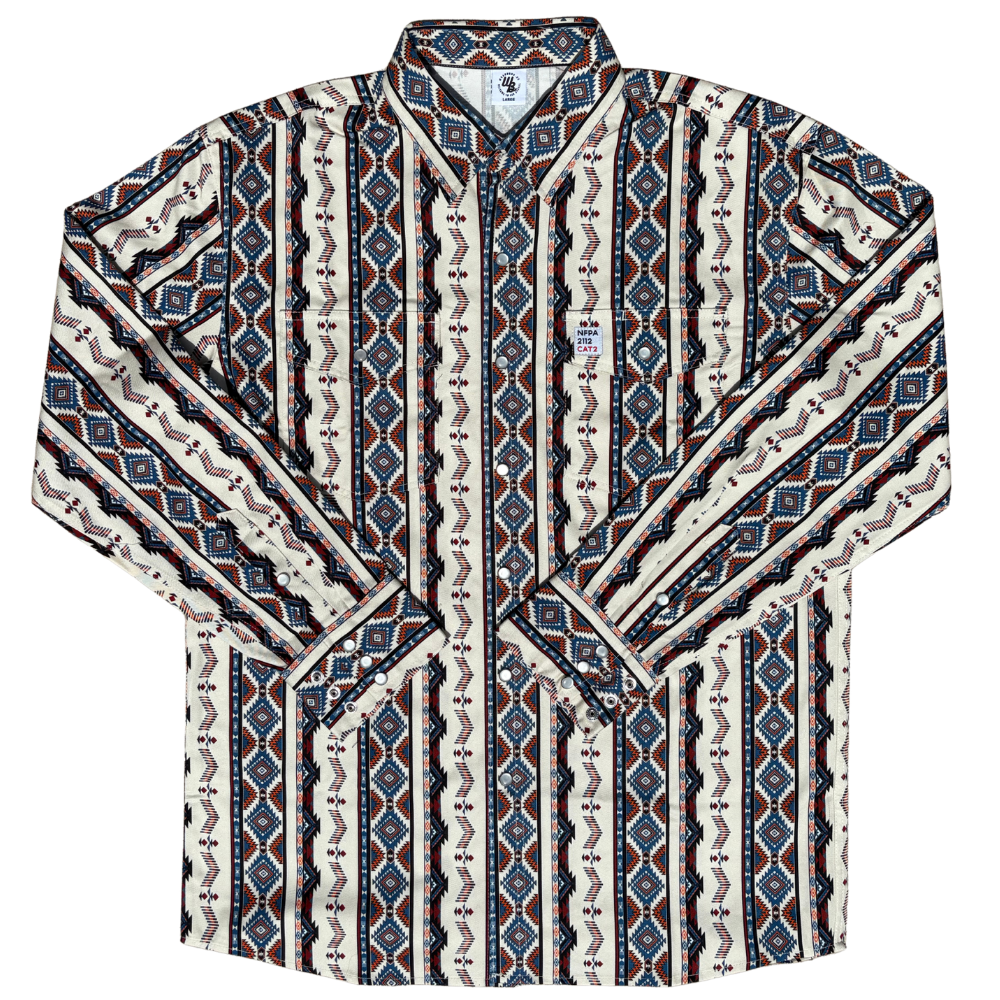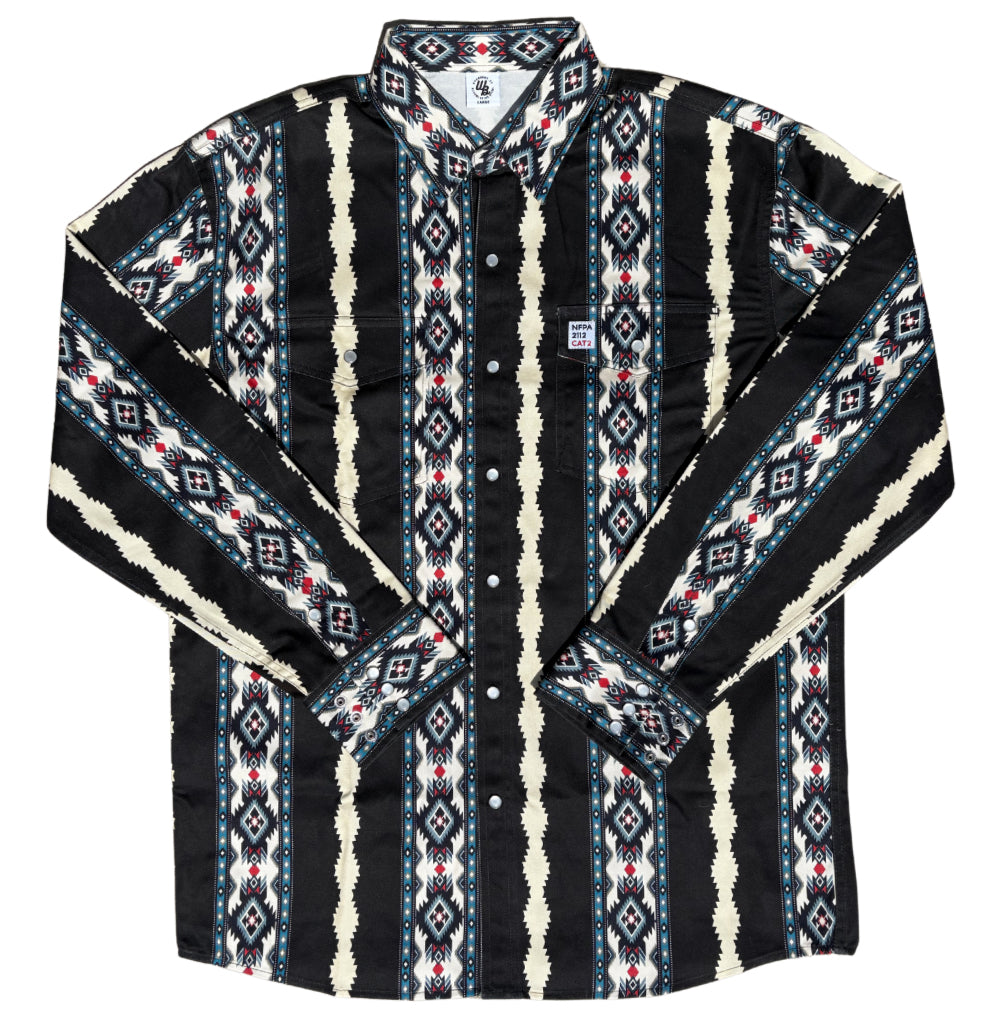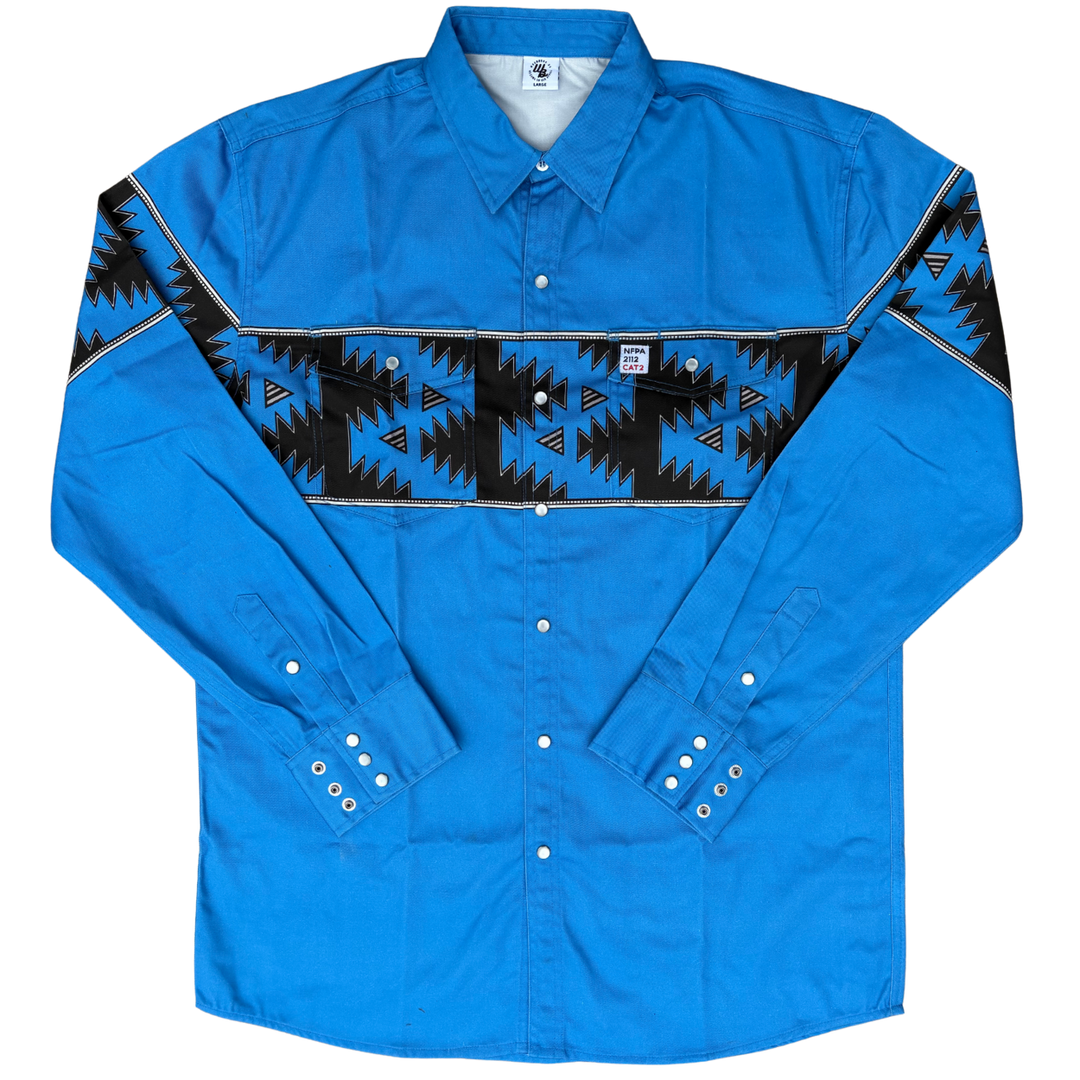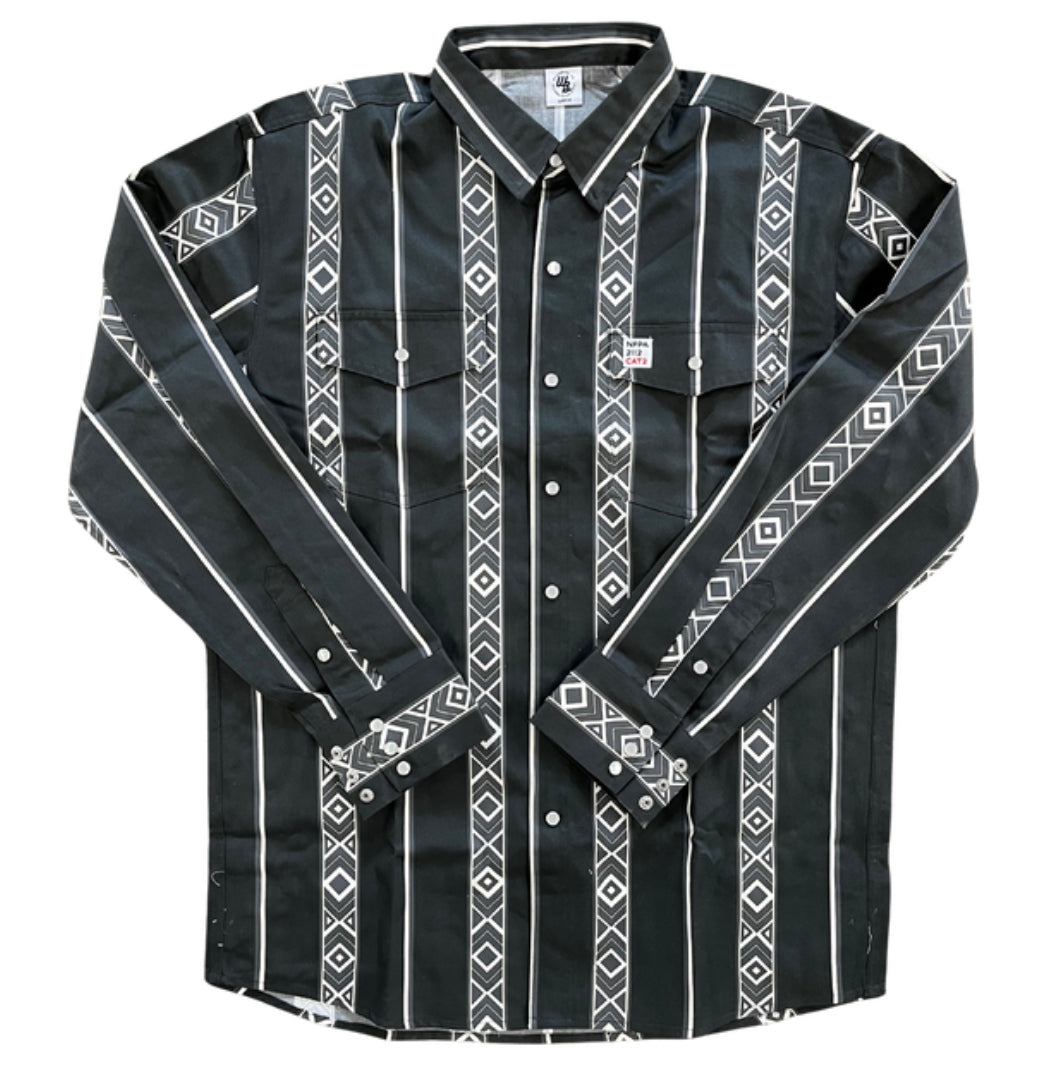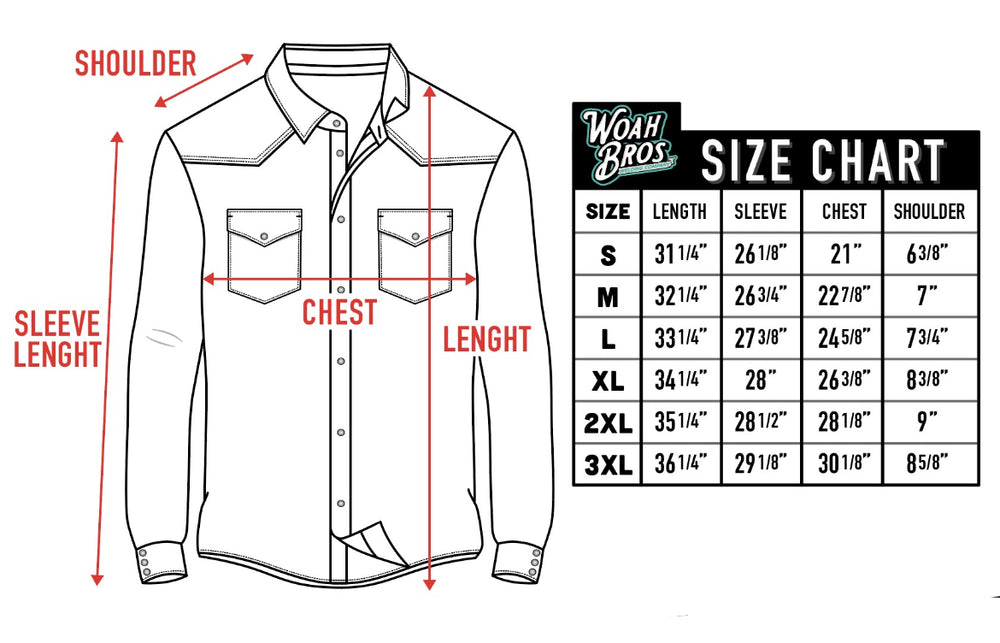The Complete Guide to Washing and Caring for FR Clothing
Flame-resistant (FR) clothing is essential personal protective equipment for welders and others who work around sparks, heat, and flame. Treated FR shirts for welders are usually made of cotton or blends with special flame-retardant chemical treatment that resists ignition. Taking care of these garments isn’t as simple as washing regular clothes – using the wrong laundry practices can strip away the FR treatment or otherwise compromise safetytheutilityexpo.comarcwear.com. In this complete guide, we’ll cover how to wash FR shirts, dry them, store them, and inspect them to extend the life of your FR welding shirts while keeping their fire-resistant performance. We’ll also explain what not to do (like using bleach, fabric softener, or high heat) and why those mistakes can damage your gear. All recommendations are based on up-to-date industry guidelines (NFPA standards, manufacturer instructions, and safety experts) to ensure accuracy and compliance.
Understanding Treated FR Shirts and Why Care Matters
Before diving into FR clothing care, it’s important to know what treated FR fabric means. Some FR fabrics are inherently flame-resistant (made of fibers that naturally resist fire), while others are treated with a flame-retardant chemical that imparts fire resistancelapco.com. Most FR welding shirts on the market are cotton or cotton-blend garments with a durable chemical treatment to help them self-extinguish if ignited. This treatment can last the garment’s lifetime if cared for properly, but improper laundering can ruin it, leaving you with a shirt that might ignite or continue burning when exposed to flame.
Why does proper care matter? FR clothing is considered life-saving equipment – if it’s not maintained, its protection can fail without any visible warning. As one PPE expert notes, “Incorrectly care for a garment, [and] doing so could compromise the protection ratings and you’d never even know it.”theutilityexpo.com In other words, washing an FR shirt the wrong way (using the wrong chemicals or methods) might make it unable to resist fire even though it looks fine. The National Fire Protection Association’s NFPA 2113 standard (Standard on Selection, Care, Use, and Maintenance of FR Garments) exists specifically to ensure FR garments are kept in top protective shapetheutilityexpo.com. OSHA regulations likewise require that FR PPE be maintained in a reliable condition, whether laundering is done at home or by the employerlapco.comlapco.com. Simply put, taking care of your FR shirts is not just about longevity – it’s about safety and compliance.
How to Wash FR Shirts: Best Practices
Washing your fire-resistant welding shirts correctly will preserve their flame-resistant properties and also keep them comfortable. Fortunately, no special equipment is needed – you can wash FR clothing at home, as long as you follow some specific guidelinestheutilityexpo.comarcwear.com. Here are the best practices for proper laundering of FR gear:
-
Read the Garment’s Care Label: Before anything, always check the care instructions on your FR shirt’s label. The manufacturer will indicate the proper wash temperature, drying method, and any fabric-specific cautionsus.tencatefabrics.com. Follow these precisely, since different fabric blends (cotton/nylon vs. 100% cotton, etc.) can have unique requirements.
-
Pre-Treat Stains and Soiling: If the shirt has oil, grease, or heavy dirt, spot-treat it before washing. You can use stain removers that do not contain bleach or other harsh chemicals. For example, products like Shout® or Zout® are generally safe for FR fabricsmodelapparel.com. Heavily flammable soils (e.g. petroleum, solvents) should be removed as much as possible; if an FR garment is saturated with flammable substances that can’t be fully cleaned, remove it from service for safetytheutilityexpo.com.
-
Wash FR Garments Separately: Launder FR clothes by themselves, not mixed with your regular laundry. This avoids cross-contamination from lint or fibers that aren’t flame-resistant and from any flammable dirt from other garmentsarcwear.com. (One study noted even washing FR cotton with regular cotton could reduce its flame resistance slightly due to lint and oil transferarcwear.com.) Keeping FR shirts separate also prevents damage to the FR fabric from abrasive contact with heavier non-FR items.
-
Do Not Overload the Washer: Use small or moderate load sizes – fill the washer no more than about 2/3 fullmodelapparel.comrpssolutions.net. This gives the garments room to move and ensures they get properly clean. Overloading can lead to inadequate cleaning and excess wear.
-
Use the Right Water Temperature: Wash in warm water (typically around 105–120 °F or per label instructions). Warm water is effective at removing soils and oils without excessively shrinking the fabricrpssolutions.netwaylanderwelding.com. Most FR clothing can be washed in temperatures up to 140 °F (60 °C), but check the label – do not exceed the max temperature recommendedwaylanderwelding.com. Avoid extremely hot water unless specified, as it can cause more shrinkage. Cold water can be used for lightly soiled clothes, but may not remove heavy greases as well.
-
Mild Detergent Only – No Soap: Use a liquid detergent for best resultstheutilityexpo.com. Avoid using old-fashioned soap (such as tallow-based soap flakes); soap can leave residue, especially in hard water, and is less effective in removing industrial grimemodelapparel.comwaylanderwelding.com. Standard home laundry detergents (without bleach) work well. There are also detergents formulated for FR garments, but standard non-bleach detergent is usually fine. Do not use detergents that contain built-in fabric softener or bleach.
-
Turn Garments Inside-Out: Before washing, turn your FR shirts inside-outrpssolutions.netmodelapparel.com. This helps reduce abrasion on the outer surface during washing, which means less fading and wear on the outside (important for those high-visibility work shirts with reflective tape or for maintaining fabric strength). It can also help maintain color and any surface treatments.
-
Use Soft Water if Possible: Hard water (water with high mineral content) can cause mineral buildup on fabric. Those mineral deposits (calcium, magnesium salts) can become flammable “fuel” on the fabric if enough accumulatesmodelapparel.comwaylanderwelding.com. If you have hard water, consider using a water softener additive or conditioner in the laundry. At minimum, rinse thoroughly to prevent deposits. Soft water will aid cleaning and reduce any residues.
-
Extra Rinses for Residue Removal: It’s important that all detergents and soils are completely rinsed out of FR clothingmodelapparel.com. Residue of dirt or detergent could mask the fabric or even contribute to flammability. If your washer has an extra rinse option, use it for FR loads, especially if you use heavier detergent doses for dirty work shirts.
-
Drying FR Clothing: When it comes to drying, avoid high heat. It’s recommended to tumble dry on a low heat setting or at most medium heattheutilityexpo.comarcwear.com. High dryer temperatures can cause excessive shrinkage and may even scorch or deteriorate the flame-retardant treatment. Remove the garments promptly when they are dry (do not over-dry) to avoid baking in any wrinkles or residues. If you prefer, you can also hang dry or line dry FR clothing – just keep it out of direct sunlight (more on storage and sunlight below). Many FR fabrics dry fairly quickly due to their blends.
-
Ironing and Pressing: Most FR shirts don’t require ironing if removed promptly from the dryer. However, if you want to iron them, use a low setting (permanent press setting)modelapparel.com. Avoid using extremely high iron heat, and do not use steam if the care label advises against it. Never apply iron-on patches or melting heat transfers unless they are FR rated, as that could add a flammable element.
By following these washing and drying best practices, you’ll get your FR shirts clean without damaging their protective finish. Proper laundering will also keep them comfortable (for instance, some FR cotton fabrics actually soften after the first few washes as any initial fabric treatment wash out, making them more pliablehudsonworkwear.com).
What Not to Do (and Why)
Equally important to the “dos” of FR care are the “don’ts.” Certain common laundry practices must be avoided with flame-resistant clothing, because they can ruin the FR treatment or create a hazard. Here are the key things NOT to do when caring for FR shirts – and why:
-
No Chlorine Bleach (or Peroxide “Bleach”): Never use chlorine bleach on FR clothingtheutilityexpo.comarcwear.com. Bleach is a strong oxidizer that can damage the fabric’s integrity and strip away flame-resistant chemicalsarcwear.com. Even “color-safe” non-chlorine bleach (often based on hydrogen peroxide) should be avoided unless the garment label explicitly allows itwaylanderwelding.com. A leading textile lab found that chlorine bleach in particular can disable some FR treatments over repeated washes (between ~50–100 wash cycles in one study)hudsonworkwear.com. Bottom line: bleach may remove that arc flash or flame protection long before the shirt itself wears out, so don’t use it. If you need to brighten or remove stains, use oxygen-based stain removers that are labeled safe for FR, or simply pre-treat and use hot water as allowedmodelapparel.com.
-
No Fabric Softeners (Liquid or Dryer Sheets): Do not use fabric softener when washing or drying FR garmentsarcwear.com. This includes liquid softeners added to the wash and those dryer sheets in the tumble dryer. Fabric softeners work by depositing fatty lubricants or waxes onto fabrics to make them feel softer – but those deposits can act as fuel and ignite in an arc or flash fire situationarcwear.com. They also can coat the fibers and mask the flame-resistant performance of the fabricmodelapparel.com. Essentially, softener residue is a flammable substance clinging to your clothing – the opposite of what you want on an FR shirt. FR clothes washed without softener may feel a bit stiffer initially, but they will retain their protective qualities. (If softness is an issue, look for FR garments made with fiber blends or treated for comfort, rather than trying to add softener.)
-
No Starch or Other Additive Chemicals: Avoid using starch or sizing on FR shirtsarcwear.com. Like softener, starch can leave a combustible coating on the fabric. Some workers like starched, crisp uniforms, but it’s not worth the risk on FR clothing. Also skip any other laundry additives unless they are confirmed safe for FR – this includes no vinegar rinses, no color brighteners, and no anti-static sprays. Never apply spray starch or any spray chemicals directly on an FR garmentarcwear.com. In general, any chemical not specifically designed for FR fabrics could either add flammability or react in a way that reduces protection.
-
Avoid High Heat Drying or Hot Ironing: As mentioned, high dryer temperatures can shrink or damage FR fabrics. Excessive heat may even glaze or melt certain FR treatments on a fabric’s surface. Always use low heat, or hang dry. If you’re unsure, it’s safer to dry on low and take slightly damp clothes out to air-dry the rest of the way, rather than risk high heat. High heat ironing is similarly risky – a hot iron could burn the flame-resistant finish or inadvertently polish the fabric, affecting its performance. Use only a low setting if ironing is neededmodelapparel.com.
-
Don’t Wash FR Clothing with Heavily Soiled Regular Laundry: As noted earlier, wash FR gear separately. In particular, do not wash your FR shirts with clothes that are contaminated with flammable substances (grease-soaked rags, oily denim, etc.). You don’t want those oils redepositing on your FR clothing. If FR garments do become grossly contaminated by oils, fuels, paint, or chemicals, do not keep wearing them in that statearcwear.comarcwear.com – launder them as soon as possible. It’s dangerous to have significant flammable residue on an FR garment: while the fabric itself might not ignite, the residue can ignite and burn on top of the fabricmodelapparel.com. For heavy contamination that regular washing can’t remove, consider using an industrial laundry or professional cleaning service that handles FR clothing, or ultimately retire the garment if it’s saturated with flammables that won’t come outmodelapparel.comtheutilityexpo.com.
-
Never Use DEET Insect Repellent on FR Clothing: This one surprises many people. DEET, the common active ingredient in mosquito repellent sprays, is actually highly flammable and it can weaken FR fabric. Spraying DEET on your FR shirt is akin to dousing it with a flammable chemical – exactly what you don’t want. One expert list of FR care “don’ts” includes no DEET insect repellent on FR garments (treat it as a fuel)arcwear.com. If you need bug repellent on the job, look for alternatives that won’t harm FR clothing (there are some FR-safe repellents available) or apply repellent only to exposed skin/clothing that is not your FR layer.
-
Don’t Forget to Wash New FR Gear Before Use: As a tip, many FR manufacturers recommend an initial wash before first use. This isn’t about safety per se, but it can help remove any fabric processing chemicals and ensure maximum comfort and performance. For example, new FR cotton shirts might feel stiff or have a protective finish from manufacturing; one or two washes will soften them and won’t harm the flame resistancerpssolutions.nethudsonworkwear.com. Always check if the garment came with any specific first-wear instructions.
By avoiding all the above “don’ts,” you prevent the most common mistakes that ruin FR clothing. In summary: no bleach, no fabric softener, no starch, no high heat, and no flammable contaminants on your FR wear. When in doubt, always stick to plain detergent and water and refer back to the garment’s label or manufacturer guidelinesus.tencatefabrics.comarcwear.com.
Proper Storage of FR Clothing
How you store your flame-resistant shirts in between uses also affects their lifespan and performance. Improper storage (for example, leaving them in the sun or in a pile of oily rags) can degrade the fabric or contaminate it. Follow these tips to keep your FR garments in top shape while stored:
-
Clean and Dry Before Storage: Always store FR garments clean. After each workday or job, if your FR shirt is soiled or sweaty, launder it before putting it away. Storing dirty FR clothing can lead to set-in stains and can attract oils or chemicals to other clothes. Plus, any flammable substance on the fabric poses a risk until it’s washed out. Ensure the clothing is fully dry before storing to prevent mildew.
-
Choose a Cool, Dry, Dark Place: Store FR clothes in a cool, dry, and well-ventilated environmentrpssolutions.netus.tencatefabrics.com. Dampness can cause mold or mildew that deteriorates fabric (and mold can impair flame resistance). Humidity can also degrade certain FR treatments over time. A dark closet or drawer is ideal; avoid direct sunlight during storagerpssolutions.netus.tencatefabrics.com. Long-term exposure to UV light can fade and weaken fabrics (even FR fabrics can be slowly damaged by UV). Keeping them out of sunlight ensures the colors stay true and the fabric isn’t prematurely aged.
-
Keep Away from Chemicals and Fuels: Designate a clean storage area for your FR gear, away from any chemicals, oils, solvents, or fuel containersus.tencatefabrics.com. You don’t want accidental spills or fumes to come in contact with your safety clothing. For instance, don’t hang your FR jacket in the same closet as pesticide sprays or leave your FR shirts lying on a workbench that has grease on it. Store them like the specialized safety equipment they are – in a clean space.
-
Don’t Store Soiled FR Clothes with Regular Laundry: If you must temporarily store a dirty FR garment (say, to launder later), keep it separate from your street clothes or personal itemsrpssolutions.net. This prevents transferring any flammable dirt. A metal locker or a sealed bag can hold the soiled FR clothing until wash time, but don’t leave it too long – the sooner it’s cleaned, the better.
-
Avoid Compression and Cramming: Try not to cram your FR clothing into a tight, compressed space for long periods. Constant heavy creasing or pressure can break down fibers. Hang shirts on hangers if possible to avoid set-in wrinkles and abrasion. If folding, ensure they are completely dry and fold loosely.
Good storage habits will preserve the protective qualities of your FR shirts and also keep them ready for immediate use. When you grab your FR shirt for the next shift, you want to know it’s clean, uncontaminated, and not weakened by poor storage conditions. As one FR fabric manufacturer notes, proper storage preserves both the protective treatment and the garment’s physical integrity, so it’s always ready to protect youus.tencatefabrics.comus.tencatefabrics.com.
Inspecting and Maintaining FR Shirts
Even with excellent washing and storage practices, FR clothing does not last forever. Work conditions for welders can be tough on garments – flying sparks can cause small holes, constant wear can fray cuffs or seams, and repeated launderings and use will eventually thin the fabric. That’s why a key part of FR clothing care is regular inspection and maintenance. You should routinely check your FR shirts and other gear to ensure they’re still in safe condition, and know when to repair or replace them.
When to Inspect: Ideally, give your FR shirt a quick once-over before each useus.tencatefabrics.com. This pre-use inspection might catch something like a new tear or a melted spot from the last weld job. In addition, it’s wise to do a more thorough inspection periodically (e.g. monthly)us.tencatefabrics.com. Employers often train workers to inspect FR PPE on a schedule.
What to Look For: Here’s an inspection checklist of issues that can reduce an FR garment’s effectivenessus.tencatefabrics.comlapco.com:
-
Holes or Thinning Fabric: Even a small hole can expose you to burns. Many companies recommend removing any FR garment with a hole larger than a dime or quarter. A hole about 1 inch or larger is usually cause for removal from servicerpssolutions.net. Also look for areas that have become worn thin or threadbare by abrasion – hold the fabric up to light; if you can see light easily through a certain spot, it’s compromisedrpssolutions.net.
-
Rips, Tears, or Open Seams: Check all over for any tears or split seams coming unstitchedus.tencatefabrics.com. Seam integrity is critical because an open seam can expose flammable underlayers or skinus.tencatefabrics.com. Pay attention to high-stress areas like underarms, shoulders, and pockets. If a seam is coming apart, some manufacturers allow repair with appropriate FR thread – otherwise, the garment should be retired.
-
Frayed Edges or Worn Collars/Cuffs: The collar and cuffs see a lot of wear (and often catch sparks). If you notice a frayed collar or fraying cuffs, that garment is near the end of its lifetheutilityexpo.com. Not only does frayed fabric ignite easier, but it also means the material is degrading. Similarly, check sleeve ends and hems for fraying.
-
Hardware Functionality: Ensure snaps, buttons, zippers are all working properlyus.tencatefabrics.com. If a zipper is broken, you might be tempted to keep wearing the shirt open – but an open FR shirt won’t protect you as intended. Hardware can often be repaired, but do so with caution (use FR-rated replacement parts like Nomex zipper tape, etc.).
-
Contamination or Residue: Sniff test and look for stains. If the shirt still smells like fuel or chemicals even after washing, that’s a warning signlapco.com. Likewise, any stain that was once a flammable substance and still remains after laundering could mean residue is embeddedmodelapparel.com. For example, an FR shirt with deep-set oil stains that you can’t get out may carry fuel in the fabric – making it unsafe. Garments that remain contaminated or retain flammable odors after washing should be removed from servicelapco.com. It’s not worth the risk, since in a fire those residues could ignite.
-
Alterations or Improper Repairs: An FR shirt that has been altered with non-FR materials (such as a non-FR patch or ordinary thread) can compromise its protectionlapco.com. Only repair FR clothing with FR-rated materials and according to manufacturer guidelines. If you’re not sure, it’s best to replace the garment.
If you find minor damage like a small tear or missing button, consult your FR gear supplier or manufacturer’s guidelines about repairs. Some minor repairs are possible (for example, sewing a small rip with FR thread, or patching with a piece of identical FR fabric) – but never do an unofficial repair that could introduce flammable material. Many companies lean toward replacement over repair for critical PPE. As one FR fabric company advises, if a garment is significantly damaged or no longer meets standards, replacement is the safe betus.tencatefabrics.com.
When to Retire an FR Garment: Ultimately, FR clothing should be removed from service when it can no longer provide full protection. Common criteria for retirement include all the issues listed above (holes, tears, fraying, contamination). A good rule of thumb is: if in doubt, throw it out (replace it). The cost of a new FR shirt is trivial compared to the cost of burn injuries. Manufacturers often say that with proper care, an FR garment’s flame resistance will last as long as the garment is structurally sound. That might be several years or dozens of wash cycleswaylanderwelding.com. Once the fabric itself is worn out (or if it’s been mistreated with chemicals), its time is up. Always err on the side of safety and follow NFPA 2113’s guidance to retire worn or damaged FR garments that can’t be repairedrpssolutions.net.
Extending the Life of Your FR Welding Shirts
By now it’s clear that proper care and maintenance directly affect how long your FR clothing lasts. To extend the life of your FR shirts and get the most value from them, practice all the above guidelines consistently. Here’s a quick recap of life-extending tips:
-
Follow washing instructions religiously – mild detergent, no additives, correct temperature, gentle cycles. This prevents premature wear or chemical damage.
-
Wash promptly after heavy use, especially if soiled with flammable grime. This prevents stains setting and fuel buildup.
-
Store carefully in a clean, dry place out of the sun, so the fabric isn’t degrading between uses.
-
Inspect often and repair properly if possible (or retire if needed) – catching a small issue early can prevent it from turning into a larger tear or hazard.
-
Have a rotation of FR shirts if you work daily in them. Rotating garments allows each to be washed and rested, which can prolong their usable life compared to wearing the same one every day until it fails.
-
Avoid unnecessary damage: For instance, be mindful not to kneel on sharp edges or snag your shirt on metal, and wear outer protection (like leather aprons or sleeves) over your FR clothing in high-spark applications. The FR shirt’s job is to protect you from incidental sparks and heat – it’s not meant to withstand welding slag or open flames indefinitely. Using the right outer layers will preserve your FR shirt underneath.
Remember, a quality FR shirt is an investment in safety. With the right care, that investment will pay off in a longer garment life and, most importantly, continued protection every time you strike an arc or face a flash hazard.
Conclusion: Stay Safe with Proper FR Care (and Quality Gear from WoahBros)
In summary, washing and caring for FR clothing is not difficult, but it does require attention to detail and adherence to some specific rules. Treat your treated flame-resistant shirts as the critical safety gear they are. Use the proper laundering techniques – wash warm, no bleach, no fabric softener, tumble dry low – and they will retain their flame-resistant properties throughout their useful lifewaylanderwelding.comtheutilityexpo.com. Store and inspect them properly so you’re never caught off-guard by a compromised garment. By following these steps, you ensure that your FR welding shirts will do their job of protecting you in a flash fire or spark incident, as reliably on day 100 as on day 1.
At WoahBros, we are committed to keeping welders safe and comfortable. We hope this guide has armed you with the knowledge to maintain your FR gear for maximum safety. If you’re looking to upgrade or add to your collection, be sure to check out WoahBros’ FR shirt collection – our flame-resistant welding shirts are built for durability and meet rigorous safety standards, so you can trust them on the job. With the right products and the proper care, you’ll stay protected for the long haul. Stay safe out there, and happy welding!




